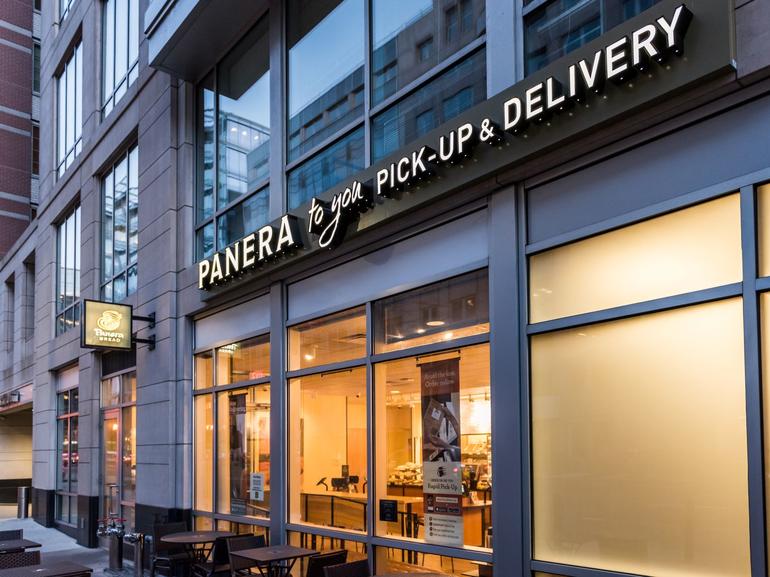Smaller Footprints, Bigger Impacts: Understanding the Shift Toward Efficient and Adaptable Dining Spaces

Consumer preferences are rapidly evolving, driven by social and economic shifts, with significant acceleration during major disruptions such as the COVID-19 pandemic. This period underscored the importance of convenience and speed, propelling technological advancements like online ordering and delivery to the forefront. Innovations, particularly in artificial intelligence and operational technologies, have transformed the quick service restaurant (QSR) and casual dining sectors, enhancing operational efficiency and meeting the growing demand for drive-thru and mobile delivery services.
As one industry leader noted, “We’re trying to do a lot of different things that are just cutting-edge testing because our segment is evolving more. What’s new today won’t be new in six months.” Staying ahead of these technological trends is crucial to maintaining a competitive advantage in this rapidly changing landscape.
Surge in Takeout and Delivery
The pandemic substantially increased demand for takeout and delivery, with nearly 70% of American adults now more likely to order takeout and 60% doing so at least once a week, according to Yelp. To meet this demand, new restaurant formats with smaller footprints and limited dining areas are emerging. NPD/CREST 2022 data reveals that 79.5% of restaurant traffic now comes from carry-out, drive-thru and delivery, with QSRs seeing an even higher proportion of 86%. This shift to smaller, more efficient designs lowers development and operational costs while adapting to consumer preferences and allowing brands to maintain a competitive edge.
Impact of Inflation on Dining Choices
Inflation is leading consumers to choose more affordable dining options. Between 2018 and 2023, the Consumer Price Index (CPI) rose by 24.42%, driving up menu prices. For example, the average menu price in Hawaii increased from $13.00 in 2018 to $15.77 in 2023, while in Michigan, it rose from $8.82 to $10.69. The National Restaurant Association reports a 0.4% increase in menu prices for June 2024, reflecting a broader trend, with the CPI for “food away from home” rising 4.1% from June 2023 to June 2024.
Wage Stagnation and Remote Work Trends
Wage stagnation and increased remote work contribute to the trend of consumers choosing less expensive dining options. From 2018 to 2022, the average annual wage for full-time employees rose by only 5.06%, lagging behind inflation. This disparity illustrates that wages have not kept pace with the cost of living, leaving consumers to make more affordable choices. The number of remote workers tripled from 5.7% in 2019 to 17.9% in 2021 according to the U.S. Census Bureau, leading to more employees not only working from home but eating from home too.
Benefits of Smaller Footprints and Conversions
The shift towards off-premises dining has led QSRs and casual dining establishments to adopt smaller footprints and more efficient layouts. Jay Johns, president of IHOP, highlights that converting existing restaurant spaces can reduce construction costs by 30-40% compared to new builds and expedite the opening process due to simplified permitting and approvals. These smaller, efficient designs lower development costs and improve the break-even point, benefiting operators’ bottom lines. As one industry expert noted, "[What] we really believe is the future of quick service restaurants is instead of these 3,000-square-foot units, you’re going to see maybe 1,500- or 2,000-square-foot units." QSRs should enhance drive-thru and delivery services, develop loyalty programs and introduce limited-time offers (LTOs) to attract customers, adapting to this evolving landscape to stay competitive.
Brand Adaptations to New Trends
Brands are recognizing the benefits and adapting to the trend of smaller footprints. Buffalo Wild Wings recently launched its fast-casual concept, Buffalo Wild Wings Go, with an 1,800-square-foot prototype in Atlanta. John Bowie, Chief Operating Officer, reports that this model has seen a 140% increase in takeout and delivery business in just six weeks. Del Taco, with a focus on efficiency, has also introduced a new small-format concept at just 1,200 square feet.
Portillo’s, which traditionally operates restaurants of approximately 11,000 square feet, have opened several new formats in recent years: a smaller store design, at 7,700 square feet, and a “restaurant of the future” at just 5,500-6,000 square feet. A third concept featuring a drive-thru and takeout-only is even smaller yet, allowing the brand to take advantage of smaller lots in strategic markets. Also in an effort to enter new, urban markets, Panera has launched both a new small-format restaurant that is half the size of a typical location, as well as the “Panera To Go” concept that excludes a dining room.
Taco Bell has employed other innovative solutions to address space concerns while developing restaurants for their customers to enjoy. They recently transformed a former neighborhood home in an urban area into a restaurant, using the front yard space for lounge seating and outdoor games. This restaurant did not have space for a drive-thru lane, but this was intentional, as they elected to deliver a more socially focused concept over a quick food delivery option.
As Brian McCauley from FRCH NELSON says, “Restaurant companies and their design firms will face the new challenge of creating branding out of the smallest outdoor details.” He emphasized that “what brands have learned is they have to have the ability to be agile, and customers are really responding to things like curbside pickup and other off-premises channels.” This shift highlights the importance of adaptability and innovation in meeting evolving consumer demands while optimizing space and operational efficiency.
Introducing New Prototypes with Millennials in Mind
Among several restaurant brands exploring new concepts, Hardee’s has introduced a 2,500-square-foot prototype in Nashville, featuring just 22 interior seats – 25% fewer than its traditional design. Additionally, Jack in the Box is advancing this trend with 2,300- and 2,000-square-foot prototypes that emphasize design efficiencies. The company plans to prioritize its smaller prototype, which combines the elements of the 1,200-square-foot drive-thru and take-out-only format with their larger model.
Along with Taco Bell’s new Defy concept, that provides a completely drive-thru experience, they’re also exploring a Go Mobile prototype that features a walk-up window for digital orders, catering primarily to third-party delivery services. At just 1,600 square feet, the restaurant does not include a dining room, allowing these locations to be built on lots as small as half an acre.
These and other prototypes are being tested with success as QSRs and fast-casual restaurants are increasingly targeting millennials and younger generations, primarily those aged 18 to 33, who represent a potential $1.3 trillion in revenue. Ten years ago, it was estimated that millennials allocated 44% of their food budget to eating out, according to a 2014 USDA analysis, and that percentage has undoubtedly grown in recent years. As this population ages and their disposable income increases, they will become an even more valuable audience for restaurants. It is crucial for brands to attract and retain this key demographic along with future generations that are even more tech-savvy and who prioritize efficiency, affordability and convenience.
Insights
Research to help you make knowledgeable investment decisions


